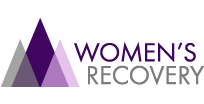When individuals or their stakeholders begin to recognize the need to treat varying levels of substance use, they will seek treatment. The American Society of Addiction Medicine has categorized the dimensions of a person’s life that are impacted by the disease of addiction (Dimensions 1-6) and rated the severity within each dimension. These criteria are used to “create a holistic, biopsychosocial assessment of an individual to be used for service planning and treatment across all service levels of care.” (ASAM, 2013).
By measuring the unmanageability of the disease in these Dimensions, an individual can be accurately assessed and placed properly within a level of care on a continuum. ASAM also crafted criteria for each treatment environment and categorized them by the time and services that are offered within each level.
One of the levels of care is Intensive Outpatient Programs (IOP / 2.1). IOPs are conducted with a minimum frequency of nine (9) treatment contact hours per week for adults (ASAM, 2013). Women’s Recovery is an Intensive Outpatient Program. Within this level of care (2.1), there are also specialty programs that can address specific concerns of a population or presenting problems, such as gender-specific, LGBTQ, age, drug of choice, or process addiction. Women’s Recovery is an elite, clinically savvy, trauma-integrated IOP that creates a nurturing environment that empowers women to discover the lives they truly deserve.
An IOP is advantageous because it can be utilized as either a step-down level of care, from more intensive treatments, or an entry point. Additionally, it consists of muti-modal treatment interventions. An individual will participate in group therapy, individual therapy, family services, case management, addiction medicine, peer support services, and mutual aid groups. Individuals who are treated within a multimodal process are afforded the experience of different types of treatment and often discover which is the most effective for their concerns. As providers, we are tasked to assess and place individuals at the least restrictive level of care to receive effective treatment.
An IOP can serve to identify and address core causes and conditions predating substance use. Research suggests that the population of women who struggle with substance use is also impacted by co-occurring concerns. So, we simultaneously treat symptoms of substance use, mental health, and trauma. Due to these complex concerns, we utilize a multi-disciplinary team of psychologists, therapists, physicians, nurses, and recovery specialists, so individuals have exposure to numerous experts. This increases the effectiveness of care with holistic, wrap-around services.
Women’s Recovery represents an innovative approach to treatment. At the IOP level of care, it is a trauma-integrated substance use treatment program supporting women in their desire to heal from traumatic experiences and underlying mental health concerns that have led to the misuse of alcohol and substances by utilizing evidence-based therapeutic interventions facilitated by a multidisciplinary team.







